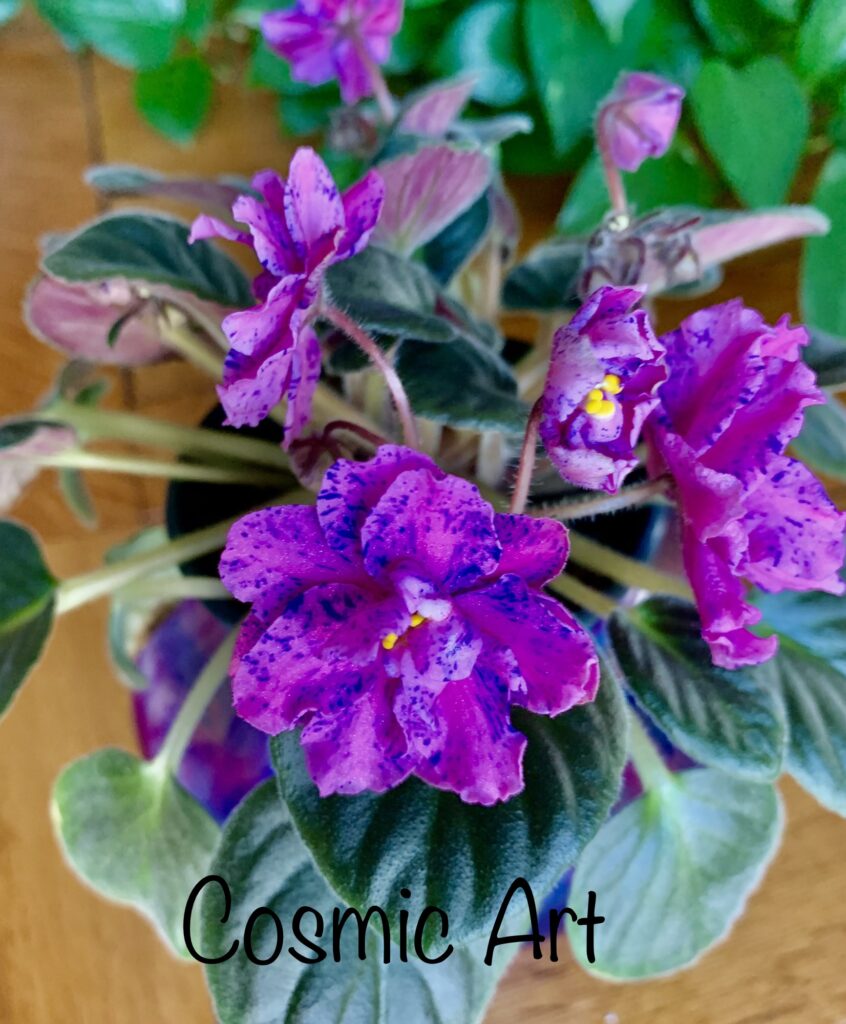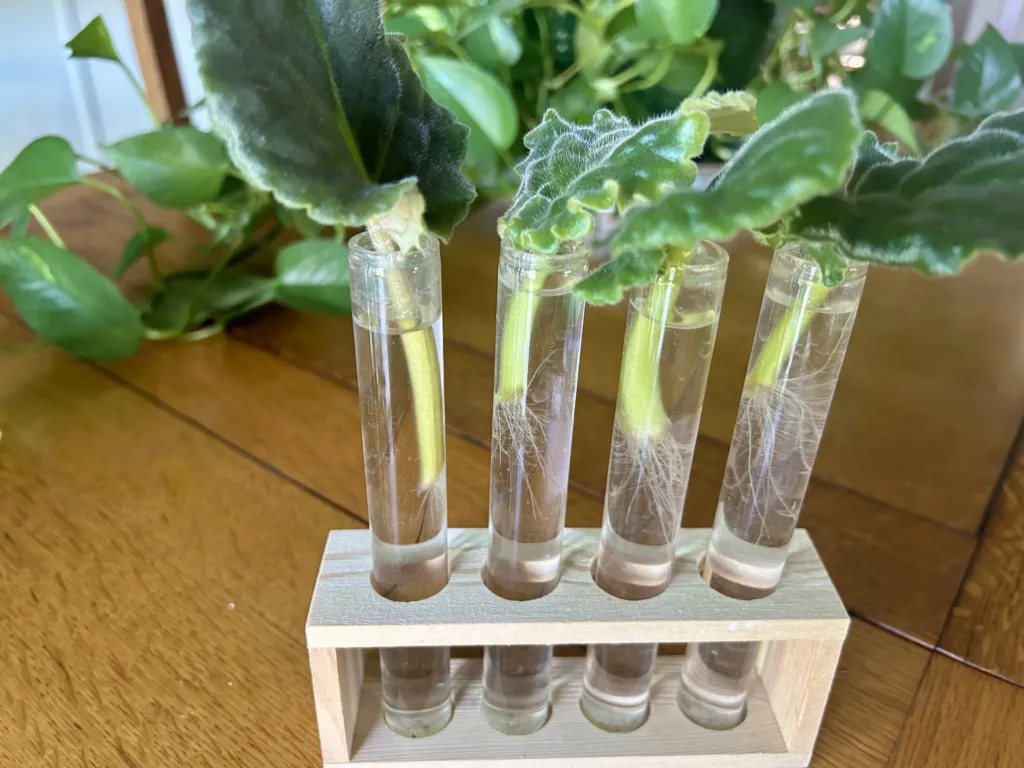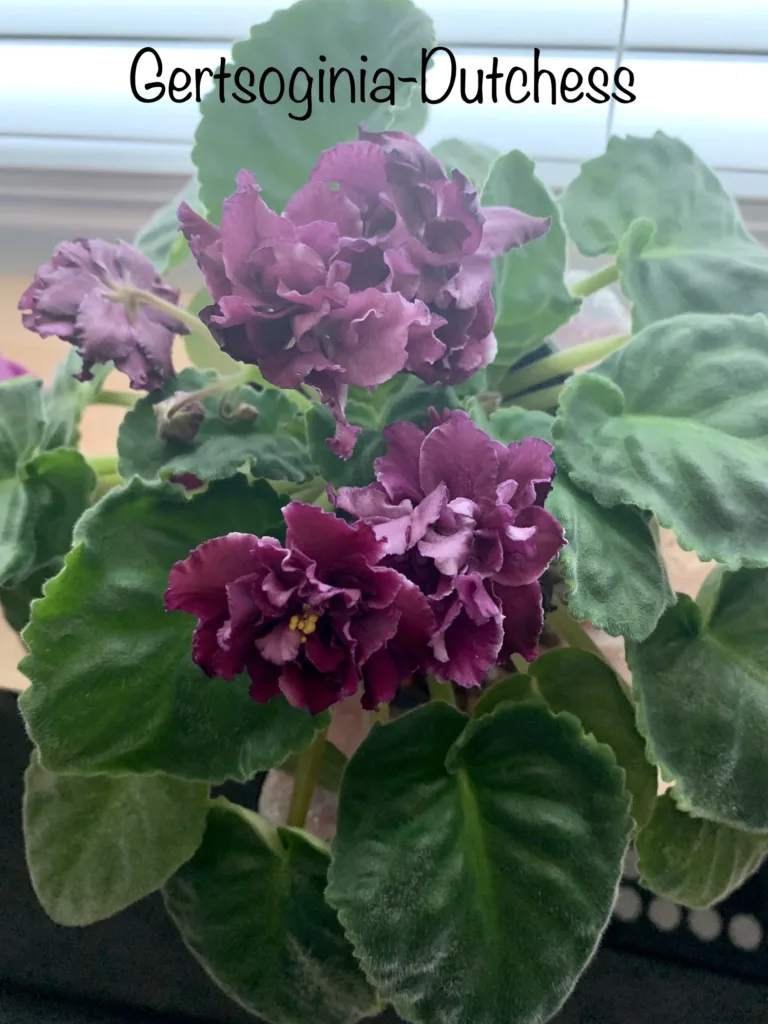
African violets are beautiful, easy-to-grow houseplants that can be propagated from leaf cuttings. Whether you prefer rooting them in water or soil, proper care ensures healthy new plants. This guide covers the best propagation methods, soil types, lighting needs, and essential care tips.
Choosing the Right Leaf for Propagation
When selecting a leaf for propagation, choose one from the second or third row of leaves. These leaves are mature enough to root successfully but not too old to struggle with growth. Avoid damaged or yellowing leaves, as they may not develop strong roots. Use a clean, sharp knife or scissors to take a cutting with at least one inch of the petiole (leaf stem).
Propagating African Violets in Water

Water propagation is a simple and effective way to root African violet cuttings. Follow these steps:
- Fill a small container or plant pronation station with room-temperature water.
- Place the leaf cutting in the water, ensuring the petiole is submerged but the leaf remains dry. These plant propagation buddies are perfect for holding your leaves in place.
- Change the water every few days to prevent bacterial growth.
- Roots should appear within 3-4 weeks. Once the roots reach about an inch long, transplant the cutting into soil.
Propagating African Violets in Soil
Soil propagation allows the cutting to establish roots directly in its growing medium. To propagate in soil:
- Use a well-draining African violet potting mix.
- Dip the petiole in rooting hormone to encourage faster root development.
- Plant the cutting at a slight angle, burying about half of the petiole in the soil.
- Cover the pot with a plastic dome or a clear plastic bag to maintain humidity.
- Keep the soil moist but not soggy, and place the cutting in bright, indirect light.
Best Soil Type for African Violet Propagation
African violets thrive in a lightweight, well-draining African Violet soil mix. My personal AV mix contains 2 parts peat moss, 1 part perlite, and 1 part vermiculite. Avoid heavy garden soil, as it retains too much moisture and can cause root rot. A slightly acidic pH between 5.8 and 6.2 helps promote healthy growth.
Using Rooting Hormone for Faster Growth
Rooting hormone isn’t required but speeds up the rooting process. Dip the petiole in powdered or liquid rooting hormone before planting in soil. This helps prevent rot and encourages strong root development.
Maintaining Humidity with Domes
High humidity improves propagation success. Use a plastic dome or a clear plastic bag over the pot to create a greenhouse effect. Ensure there is some airflow to prevent mold. Remove the covering once new leaves start to form. This hygrometer is perfect for measuring humidity levels.
Fertilizing Young African Violet Cuttings
Once new growth appears, start fertilizing with a diluted liquid African violet fertilizer-I prefer Schultz African Violet Fertilizer, have used it for years with continuous blooms. Feed every week at half strength to avoid burning delicate roots.
Light Requirements for Healthy Growth
African violets need bright, indirect light to thrive. Place them near an east- or north-facing window. If natural light is insufficient, use grow lights. LED grow lights work best, positioned 12 inches above the plants for 12-14 hours per day.
When to Repot and What Size Pot to Use
Once baby plants (pups) appear at the base of the leaf, they are ready for repotting. This usually happens within 2-3 months. Use a small pot, about 2-3 inches in diameter, to allow proper root development. Avoid oversized pots, as they retain too much moisture and slow growth.
When to Remove the Parent Leaf
The original leaf will eventually yellow and die as new plants establish. Once the baby plants have at least three healthy leaves and a strong root system, gently remove the parent leaf. This allows the new plant to focus on independent growth.
Ongoing Care for Healthy African Violets
After transplanting, care for young African violets with proper watering, light, and humidity.
- Watering: Use room-temperature, filtered water. Water from the bottom by placing the pot in a shallow dish of water for 20-30 minutes. Avoid wetting the leaves to prevent spots and rot. Or if you like you can water wick your African Violets like I do. For more on water wicking just click here.
- Light: Continue providing bright, indirect light or grow lights for steady growth.
- Fertilizer: Feed with diluted African violet fertilizer every 2-4 weeks.
- Humidity: Maintain 50-60% humidity for healthy foliage.
- Temperature: Keep temperatures between 65-75°F for optimal growth.
Conclusion
Propagating African violets is simple with the right methods. Whether using water or soil, providing proper light, humidity, and fertilizer ensures strong, healthy plants. By following these steps, you can successfully grow new African violets and expand your collection with ease.
Please be sure to check out my Gardening Blog Post Page for more tips on all types of gardening. Including Seed Saving, Seed Starting, Orchids, Water Gardening, Coldframe Gardening, Indoor Bulb Gardening, Hydroponics, Container Gardening, Mums, Herbs, African Violets, planting Bulbs, Flower Gardening, Vegetable and Fruit Gardening, Indoor Houseplants of all kinds, Cactus, Succulents, Hanging plants, Deer resistant plants and even Bird, Bee, Butterfly and Hummingbird Gardens!

